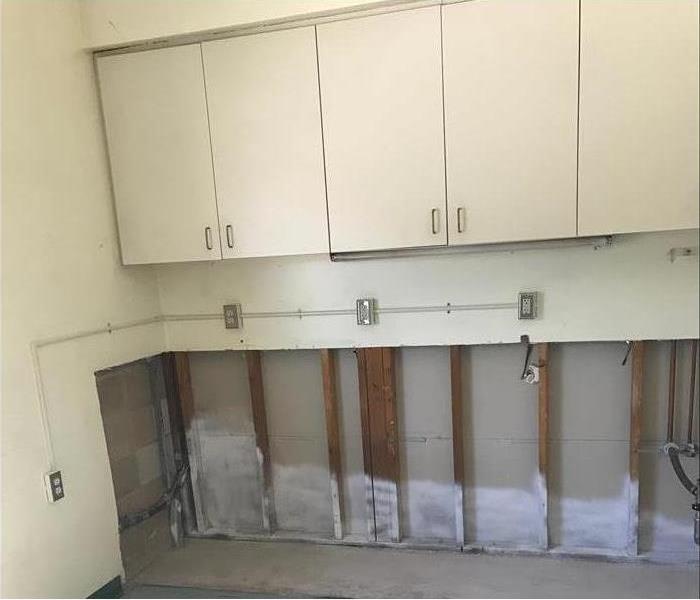Does your wall need a flood cut?
2/22/2022 (Permalink)
Storm flooding can be a serious concern for homeowners in North San Diego County. Once rising water works its way into your home, it can be very hard to eliminate the problems it causes:
- Structural damage
- Mold growth
- Bacterial or chemical contamination
Your walls are quite susceptible to water damage, especially if they’re insulated. The best way to prevent damage from spreading is to make a flood cut in any wall that’s been exposed to water.
What Is a Flood Cut?
When drywall gets wet, the water seeps in and spreads from the point of contact, weakening the material. To make sure all the damage is removed, a clean, horizontal cut (called a flood cut) is made across the wall, 12 inches above the area that was exposed. After this cut is made, a contractor can tear out and dispose of the soggy drywall material from the flooding. Just as important, the area behind it can now be inspected, cleaned and dried before a new section is put into place. Any moist insulation must also be replaced to prevent mold from growing and because it will no longer act as an insulator.
When Is It Needed?
A cut may not be needed if the floodwater is clean and there’s no insulation or other absorbent material behind the drywall. In that case, professional methods can be used to dry the wall’s interior without completely removing it. In a bad storm, flood waters can carry sewage and other hazardous chemical and biological waste. If these seep into your home, they’ll contaminate your living space, making it very unhealthy. Cutting and replacing compromised wall material is the only way to be certain that all the damage is repaired.
After flooding from a major weather event, you should have any damage repaired by an experienced storm damage restoration service. We can determine whether flood cuts are required to return your home to a safe and healthy living environment.






 24/7 Emergency Service
24/7 Emergency Service
